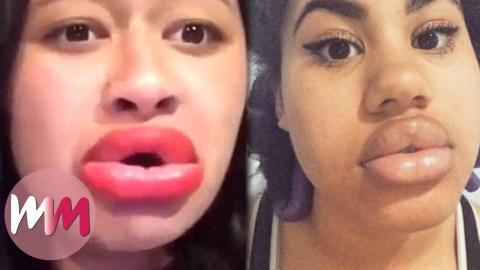Top 5 Beauty Hacks that are Actually Terrible for Your Skin

#5: Using Witch Hazel as an Astringent
This remedy was first used by Native Americans to cure a variety of skin ailments. Witch hazel is an easily found, inexpensive ingredient, and is often touted as a perfect addition to DIY toner recipes. The tricky thing here is, witch hazel essence isn’t inherently harmful. The problem is that witch hazel is often sold in a diluted form that includes high concentrations of alcohol, which can be very damaging for your skin. This means you have to be very careful when shopping for this ingredient and ensure you’re getting either pure witch hazel extract or an alcohol-free mixture.
#4: Making DIY Lip Plumpers
After Kylie Jenner debuted those new fuller lips, her legions of fans were eager to find a way to replicate her look without going the surgical route. DIYs and YouTube challenges quickly followed, and results ranged from mildly painful to... emergency room visits. Many who attempted to achieve a plump pout by sucking on a shot glass ended up with bruising, lacerations and infection. Putting pastes made from irritants such as hot peppers on your lips can equally prove quite uncomfortable or painful. Even if you do achieve the desired result, it won’t last longer than a few hours anyway.
#3: Using Hairspray to Set Your Makeup
Everyone wants makeup that lasts all day, but this isn’t the place to resort to DIY tricks. In recent years, many brands have come out with setting sprays that achieve the same results, but some still rely on the old school hack of using hairspray to make their look last. The problem here is that there are ingredients in hairspray that can cause acne, irritation and damage to the skin around your eyes. Do some research and invest in a proper makeup setting spray, and save the hairspray for your hair.
#2: Exfoliating with Baking Soda
One thing skin care experts can agree on is how bad it is to use baking soda as an exfoliant. Baking soda has a highly alkaline pH level, which will hurt the significantly lower pH level of your skin. Using a product with such a high pH will clear the skin, but can cause dryness, irritation and strip your skin of its natural defenses against bacteria. Using a physical exfoliant to remove layers of dead skin might be tempting, but in fact, chemical exfoliants like glycolic or lactic acid are gentler on your skin and are effective.
#1: Using Lemon Juice to Brighten Skin
Lemon juice is an ingredient in many DIY beauty recipes claiming to fade scars, lighten skin and give you a healthy glow. Like baking soda however, lemon juice is highly acidic, and is therefore way too harsh to put on your face. Not only that, but citrus oils are potentially phototoxic, meaning that they react negatively when interacting with sunlight. So if you go outside after using a lemon skin treatment, you may run the risk of a rash or even experience chemical burn. Ouch!

